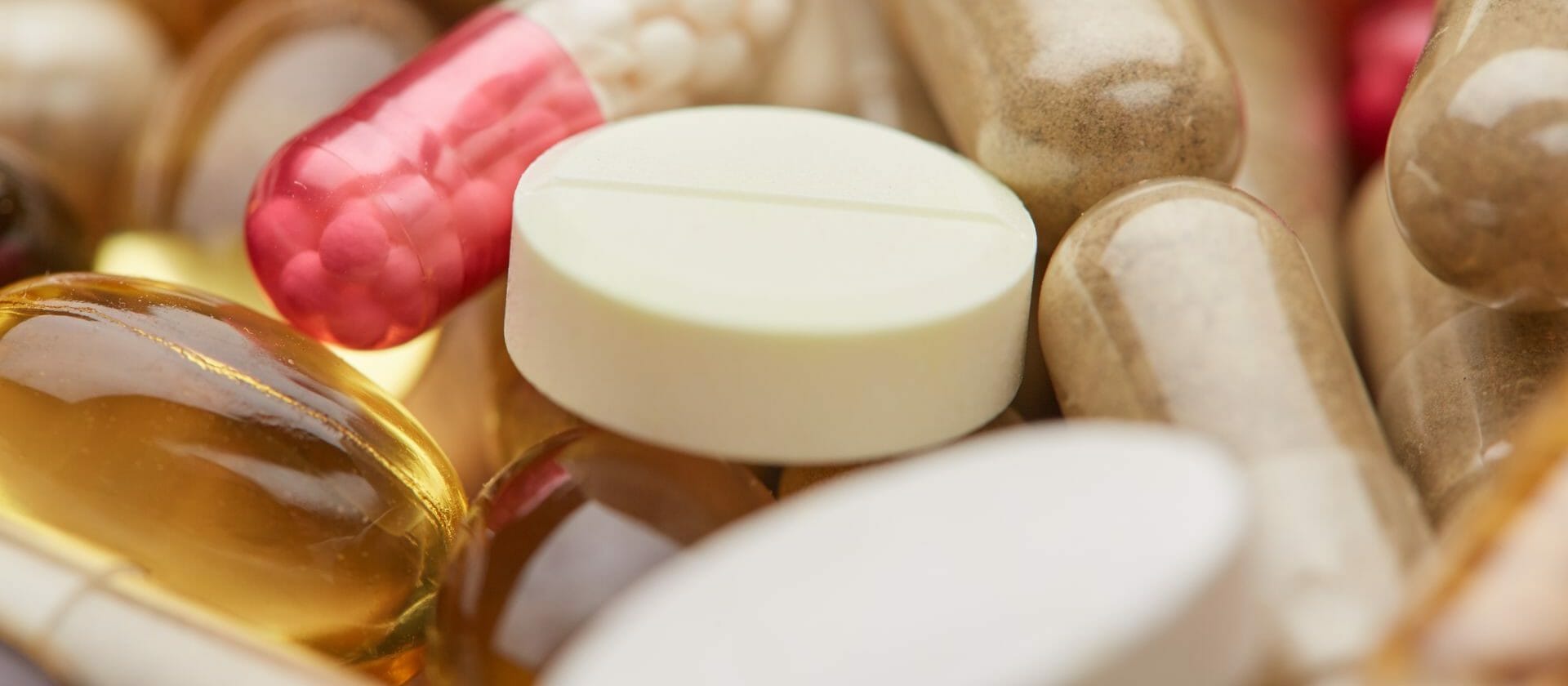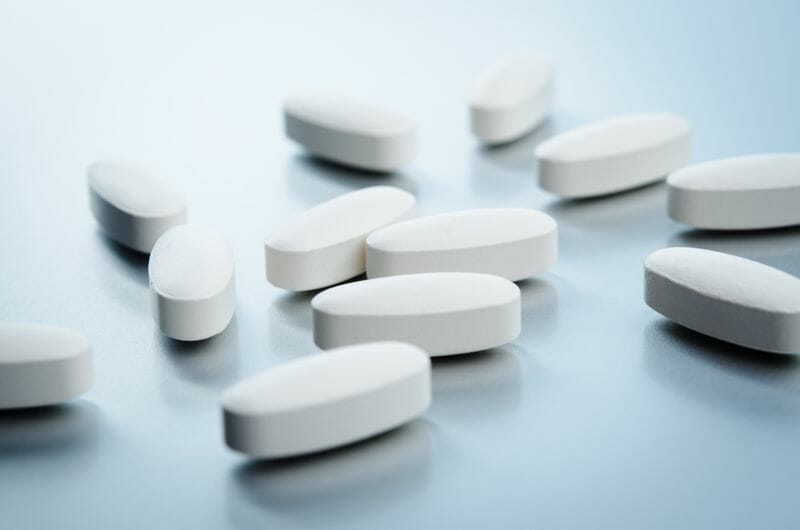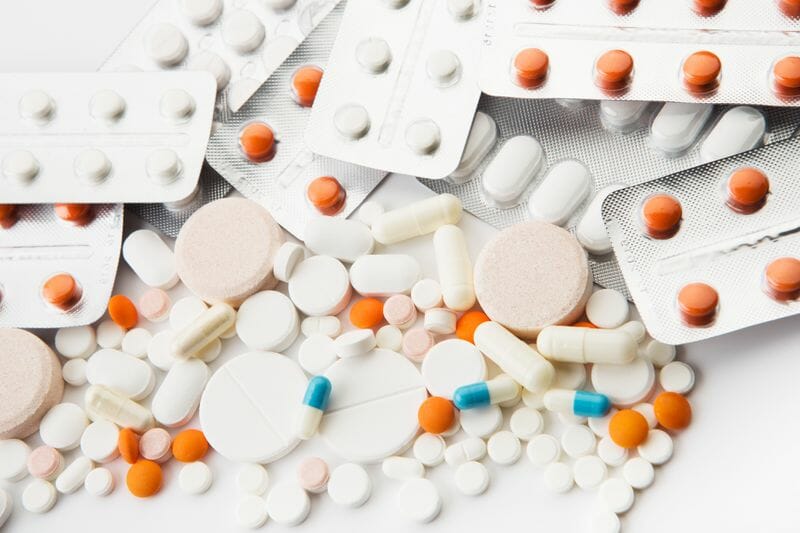Dilaudid Addiction Explained
Hydromorphone, known as Dilaudid, is an artificial opioid commonly prescribed for relief of moderate to severe pain for patients suffering from chronic cancer pain, acute pain and, to some extent, chronic mild pain. (1)
Dilaudid has been categorized as a schedule 2 abused substance that is marketed as a tablet, injectable ampoules, suppositories and multiple-dose vials. Once ingested, the drug functions by binding itself to chemoreceptors in the central nervous system and brain to dull the pain.
The drug activates the flow of an excessive quantity of dopamine in the brain, resulting in pleasurable feelings.
This, in turn, triggers part of the brain called the reward centre, which encourages repetition of the event. Frequent abuse of the Dilaudid makes the brain produce little natural dopamine, hence making the body dependent on the drug. (2)

Dilaudid Brand and Street Names
Like other schedule 2 opioids, hydromorphone is a medication substance commonly abused by adults that has made a large number of users dependent on the drug.
Previously, most users abused low doses like 2 and 4 milligrams of Dilaudid, but with time, hydrocodone and oxycodone became more popular among the drug-abusing community. These psychoactive drugs are promoted under the brand names Exalgo and Dilaudid. (3)
Other brand names for Dilaudid include Hydrostat, Palladone, Sophidone LP, Hymorphan, Laudicon, Hydal, Opidol, Hydromorph Contin and Dimorphone. (4).
The street names for Dilaudid include D’s, big D, M-80s, peaches, footballs, juice, smack, dust and dillies. These names are popular among individuals who abuse drugs. Most of the substance users are found in rural and suburban populations. (3)
Legal Status (UK)
Similar to all opioids used for pain relief, hydromorphone is habit-forming and popularly abused. The psychoactive drug is prohibited in the United Kingdom by the 1971 Misuse of Drugs Act (MDA). This meant that it was illegal to possess the drug unlawfully or with the intent to supply it or even to allow your premises to be used as a supply location.
The drug is also listed as Class B, meaning it is highly regulated. The penalties for trafficking and supply of the drug were increased in the 1980s. (4)
Routes of Administration
Hydromorphone is commonly administered through three ways: intramuscular, intravenous and oral routes. When a person takes the psychoactive drug via intramuscular, intravenous or subcutaneous means, it is medically advised that it be injected at a concentration of up to 10 mg/ml. When administered via oral routes, a person can take it either with or without food. (5)
The psychoactive drug Dilaudid usually takes effect between 30 minutes and an hour after administration. Its effects are almost immediate when used intranasally. The effects of Dilaudid last between four and six hours regardless of the route of administration. (5)
Pharmacological Actions of Dilaudid
Hydromorphone is an artificial opioid agonist conclusively found in field test kits. Medical research on this psychoactive drug has indicated that its clinical indications, pharmacological and toxic effects, abuse and liabilities are fundamentally similar to opioid palliatives like oxycodone and morphine. (6)
Hydromorphone has the same effects as the other opioids. The user feels euphoric after taking the psychoactive drug and experiences feelings of relaxation, reduced anxiety, respiratory depression, sedation, constipation, papillary constriction and cough suppression. An overdose of Dilaudid leads to severe respiratory depression and somnolence, which may lead to stupor or coma, skeletal muscle flaccidity, cold and clammy skin, increased heart rate, constricted pupils, reduction in blood pressure and even death. (6)
Chemical Formula C16H19NO
Dilaudid (hydromorphone hydrochloride) is derived from hydrogenated ketone of morphine and is an opioid agonist. The chemical name of this psychoactive drug is 4,5α-epoxy-3-hydroxy-16-methylmorphinan-6-one hydrochloride. The molecular weight is 321.80. Its molecular formula is C16H19NO3·HCl. For medication purposes, the psychoactive drug may be orally administered as a tablet or as an oral solution. (7)
Dilaudid Addiction and How It Develops
Dilaudid is among the strongest artificial narcotics in the opioid group of drugs. Its frequent use is just like alcoholism and can rapidly develop to addiction in a short period of time.
Regular usage of Dilaudid will make the body tolerant to the psychoactive drug, causing the user to seek a larger and more frequent dosage of Dilaudid to satisfy their cravings. This is how addiction starts developing.
Dilaudid tolerance develops within three weeks. Once it takes effect, a person may develop the habit of taking the pills regularly. Consequently, this results in substance dependence and addiction, even though the user may be consuming the dose as prescribed by their physician. (8)
Why and how is Dilaudid addictive?
Addiction is defined as the irresistible pursuit of a drug regardless of its dangerous consequences. If a Dilaudid user takes the psychoactive drug as prescribed by a physician, then they may not suffer from any opioid addiction. Users who end up addicted to Dilaudid are those who keep taking the drug unnecessarily or even after their medication is over. (9) Overcoming a Dilaudid addiction is difficult, especially because of the horrible withdrawal symptoms the user goes through. Thus, it’s no surprise that the majority of people who become addicted to hydromorphone may want to avoid withdrawal symptoms at all costs and end up consuming the drug even more. (9)

Causes & Risk Factors of Dilaudid Addiction
There are many factors that may lead to Dilaudid abuse and addiction. Medical research has identified genetics as one of the major factors contributing to an individual’s risk of abuse.
According to the findings, definite genetically shaped elements of characteristics such as impulsivity influence how an individual chooses their environment. This, in turn, may end up increasing or decreasing the individual’s risk for Dilaudid abuse. Additionally, a person’s risk for Dilaudid abuse may be influenced by environmental factors such as family origin, social factors and individual temperament. (10)
Influential risk factors of Dilaudid addiction include ready access to Dilaudid, low socioeconomic status, certain personality traits such as impulsivity, family history of substance abuse and history of conduct disorder during childhood. (10)
Call our admissions line 24 hours a day to get help.
Dilaudid and Common Drug Combinations
Individuals addicted to alcoholism often mix Dilaudid with alcohol and sometimes with benzodiazepines to obtain a greater high. Mixing these drugs intensifies their effect. However, doing this may seriously slow the breathing and heart rates because the drugs are central nervous system depressants.
Mixing Dilaudid with these drugs has caused several individuals to suffer from fatal overdoses, respiratory failure and seizure, or even unanticipated comas. Furthermore, individuals abusing Dilaudid are always craving the initial euphoric effects they felt when they first took the psychoactive drug. This consequently leads to abuse of hard drugs, like cocaine and heroin, which are often more accessible to get such a rush. (8)
Signs and Symptoms of Dilaudid Addiction
Mental states
A person struggling with Dilaudid addiction will likely exhibit a certain subset of mental symptoms. These may be more severe in some users than in others. The severity of symptoms normally depends on the duration of the addiction, the level of resistance to the drug and the prevalence of use. (11)
Common mental symptoms of Dilaudid addiction include worsening of emotional well-being, exacerbation of mental illness symptoms, delusions, hallucinations and paranoia. (11) Some of the associated mental states are:
- Obsession with the next dose
- Hiding the drug habit from the doctor and family
- Needing larger doses at increased frequency
- Spending a lot of money to feed the drug habit
- Neglecting social functions, work-life and family responsibilities
Physical symptoms of Dilaudid abuse
Dilaudid is a painkiller that is more powerful than morphine and is likely to be abused and even lead to long-term addiction. Cases of people developing a dependence on the drug as a result of following their physician prescriptions have also been reported. An individual with Dilaudid substance dependence may experience some of the following withdrawal symptoms if they cease taking the medication or reduce their dose.
- Stomach pain
- Respiratory depression
- Dizziness
- Nausea and vomiting
- Urinating difficulties
- Circular marks on the arms and/or legs
- Collapse of the circulatory system
- Seizures
- Coma
- Heart attack
Psychological symptoms of Dilaudid abuse
Dilaudid functions by attaching to specific receptors in the brain, thus copying the effects of the naturally produced pain-relieving chemicals. When it attaches to opiate receptors in the spinal cord, brain and other locations in the body, it blocks the perception of pain and affects the user mentally, especially when taken in large quantities or when mixed with other drugs. Some psychological symptoms include:
- Paranoia
- Hallucinations
- Delusions
- Development or worsening of mental illness
- Deteriorating emotional well-being

Dangers and Effects of Dilaudid Addiction
Hydromorphone has a high prevalence of abuse like other opioids, and several medical issues have been linked with abusing of opioids in the UK.
The drug has been termed as dangerous even when used as prescribed by a physician. It is even more harmful when mixed with substances like alcohol, used for reasons other than pain relief, ingested in higher amounts than prescribed or used without a medical prescription.
The addiction may lead to pinpoint pupils, weak pulse, shallow breathing, unconsciousness, vomiting, disorientation, fatigue, poor decision-making skills and poor response to stress.
Short-term and long-term effects of Dilaudid abuse
The process behind the short-term effects of Dilaudid is similar to that of opioids like morphine and heroin. When the psychoactive drug enters the body, it alters pain perception and releases dopamine, which is involved in several brain functions. In the case of hydromorphone, however, it is released in large quantities, causing a greater tendency of addiction.
The consistent use and abuse of hydromorphone lead to more intense side effects in the long run. Some of these effects include:
- Brain damage
- Coma
- Severe anxiety disorder
- Worsening mental health issues
- Respiratory depression from large doses
- Impaired decision-making skills and strange behaviour
- Drug dependence and addiction
- Death
Call our admissions line 24 hours a day to get help.
Co-Occurring Disorders with Dilaudid Addiction
A co-occurring disorder occurs when a user has substance dependence disorder and mental illness such as depression or anxiety simultaneously. This type of diagnosis is known as a dual diagnosis, e.g., alcoholism and depression or prescription drug dependence and anxiety.
Most individuals abusing Dilaudid have been found to meet the criteria for mental health disorders such as post-traumatic stress disorder (PTSD), depressive disorders, antisocial personality disorder and other substance use disorders.
A mental health disorder may precede the development of a Dilaudid disorder or may be triggered or worsened by Dilaudid addiction.
Teen Dilaudid Abuse
Data released by the Office for National Statistics indicated that the number of deaths linked to synthetic opioids like Fentanyl and others like Dilaudid had increased by 29% in the UK in a year, with a significant portion of the death being in teenagers. According to the Guardian, the number of prescriptions by general practitioners in England has almost doubled over the last decade. (12)
Teenagers sometimes abuse hydromorphone but not in large quantities compared to opioids like OxyContin and Vicodin. Teens may get these drugs by obtaining a prescription of opioids from the medicine cabinets of friends and family. In some cases, they also order illegally from the Internet or from dealers who have stolen the drugs from pharmacies and hospitals.
Parents have been advised to help prevent teen drug abuse by acquainting themselves with common signs and symptoms, such as sudden or extreme changes in personality and physical appearance, abnormal changes in social activity and academic or athletic performance, severe mood swings, paranoia and confusion, among many others.
Dilaudid Overdose Explained
An overdose is likely to occur when too much of any drug is suddenly introduced into the bloodstream. The method by which an individual administers Dilaudid could lead to an overdose. This includes smoking, snorting and injecting the drug, which sends the full dosage of the psychoactive drug swiftly into the person’s blood.
Symptoms of hydromorphone overdose include coma, confusion, cold, clammy skin, fatigue, breathing difficulties such as shallow breathing or no breathing, constipation, dizziness, bluish fingernails, itching and light-headedness, among many others. (13)
Seeking Treatment for Dilaudid Addiction
Ultra-modern rehab centres implement an integrated treatment program when treating Dilaudid addiction. They understand that in many cases the addiction occurs together with a mental health disorder, thus calling for an integrated treatment plan that includes;
- Medical detoxification: Detox services offer clients with the necessary medical assistance and monitoring, enabling them to stabilize in healing.
- Evaluation: This helps in diagnosing the patient by identifying issues that may hinder the client from attaining full recovery.
- Diagnosis: This step is important in helping the client gain a better understanding of past experiences and plan for the future.
- Treatment plan
- Personal therapy
- Group therapy
- Family therapy
- Aftercare plan
- Aftercare services and support
Withdrawal from Dilaudid
An individual taking Dilaudid, even for legitimate reasons, can become dependent on the drug in as little as two or three weeks. (8)
Dilaudid abuse usually leads to quick physical and psychological dependence. Most individuals who are addicted to Dilaudid undergo troublesome withdrawal symptoms like cramps and sweating when they stop using the psychoactive drug. This is usually the body’s reaction to lack of its expected dose.
Withdrawal from Dilaudid, in some cases, also results in complications like vomiting. That is why it is never advisable to discontinue Dilaudid without medical supervisions. (8)
Symptoms of withdrawal
Patients withdrawing from Dilaudid drug may initially appear clammy and cold, exhibiting flu-like signs. Withdrawal symptoms from this psychoactive drug are similar to those seen in heroin addicts. (8)
- Muscle and bone pain
- Diarrhoea
- Restlessness
- Tremors
- Intense drug cravings
- Body cramps
- Sweats
- Shaking
- Vomiting
- Anxiety
- Agitation
- Elevated blood pressure
Dilaudid withdrawal timeline
First hours: The patient experiences the primary signs of withdrawal like restlessness and anxiety just a couple of hours after taking the last dose.
- Days 1-2: The user experiences intense symptoms like sweating, muscle aches, nausea, shaking and chills after the first 14 hours of withdrawal.
- Days 3-4: Majority of users may start improving on the third or fourth day as the intense symptoms of withdrawal begin fading away. Only mild signs of nausea and aching muscles may be experienced.
- Days 5-14: The user may feel some recurring symptoms of insomnia, depression, anxiety and irritability. However, this depends on the severity of the Dilaudid addiction. (8)
Relapse prevention
Most Dilaudid addicts may relapse after leaving the rehabilitation centres. This is why addiction post-treatment is crucial to ensure that patients don’t succumb to their previous urges. After all, it’s a constant, lifelong battle, and the treatment does not end in rehab.
Many treatment facilities have set up support groups that patients need to attend after completing their rehabilitation program. Through these groups, users can interact with peers who undergo the post-addiction process without being judged. These groups also help individuals battling with addiction to relate to other patients who have had Dilaudid addictions and find common ways to prevent relapse.
Overcoming Dilaudid Addiction
The first step in the recovery process from Dilaudid addiction is detoxification. Patients who have overcome physical dependence should also try to overcome psychological dependence. In most cases, this is usually a lifelong struggle requiring the assistance of drug rehabilitation specialists.
To conquer an addiction completely, it’s advisable that the patient works with the rehab management team to develop a treatment method that will lead to their permanent recovery.
Inpatient and outpatient treatment
Inpatient treatment is one of the most intensive levels of care that a client can receive because it provides 24-hour care under the supervision of professionals. This type of treatment is mostly recommended for individuals with high amounts of stressors and triggers in their environment, low availability of support, a history of chronic substance abuse and poor treatment outcomes in the past.
Outpatient treatment is usually an excellent option for users who suffer from drug abuse or alcoholism. It can be delivered through various settings like hospitals, community mental health facilities, local health departments and even from a therapist’s office by telephone. Moreover, outpatient treatment is mostly preferred because of its flexibility since the client’s daily schedule can be adjusted to allow sufficient time for school or work commitments.
Medication used during treatment and recovery
Medical studies show that individuals with opioid use disorder have high tendencies of relapsing back to the addiction even if they are in a detoxification program. Relapse is seen as a normal step on the road to drug recovery; however, it can be life-threatening because it raises the risk for a fatal overdose.
There are medications approved by the MHRA that users can take to prevent relapse and to reduce the negative effects of withdrawal symptoms and cravings without producing the euphoric feeling the original drug caused. Lofexidine is among the non-opioid medicine designed to reduce opioid withdrawal symptoms. Other drugs include methadone and buprenorphine.
Therapy for Dilaudid addiction
Once a patient stops using the substance, past emotions and traumatic symptoms may resurface and could haunt the patient. Several addiction therapies and services are available to help patients fully recuperate from Dilaudid addiction. These therapies are consistent with research-based practices and include;
- Individual therapy
- Family therapy
- Group therapy
- Recovery-oriented challenge therapy
- Expressive therapies in recovery
- Trauma therapies
- Eye movement desensitisation and reprocessing (EMDR)
- Seeking safety sessions
Other interventions
The effects of various Dilaudid treatment options may vary differently from one individual to another. There are several alternatives that patients may undergo as a complement to some of the options provided above. These include:
- Tapering
- Replacement
- Maintenance
- Holistic treatment
- Support groups
- 12-step program
Types of Dilaudid addiction treatment
Overcoming a Dilaudid addiction may seem like a nearly impossible task to accomplish. However, if the person is consistent and resilient, they can be successful. There are several treatment options that an individual interested in quitting Dilaudid can consider, including:
- Detoxification
- Sober homes and aftercare
- Cognitive behavioural therapy (CBT)
- Contingency management
How to Help a Loved One Seek Treatment
Helping a loved one to overcome Dilaudid addiction is a process that must be initiated by the individual. It’s recommended that family and close friends be supportive and helpful to the person suffering from addiction. Tips that may be useful include:
- Showering the person with love and understanding instead of blame or prejudice
- Providing emotional support with genuine willingness to help
- Politely encouraging the patient to seek professional medication
- Seeking professional help if efforts to convince the person fail
References
- (1) https://www.jpsmjournal.com/article/S0885-3924(05)00033-3/pdf
- (2) https://www.ncbi.nlm.nih.gov/pubmed/11869661
- (3) https://www.nihlibrary.nih.gov/resources/subject-guides/opioids/street-commercial-names
- (4) https://en.wikipedia.org/wiki/Hydromorphone#Legal_status
- (5) https://www.ncbi.nlm.nih.gov/books/NBK470393/
- (6) https://www.deadiversion.usdoj.gov/drug_chem_info/hydromorphone.pdf
- (7) https://www.rxlist.com/dilaudid-drug.htm#description
- (8) https://www.addictioncenter.com/opiates/dilaudid/
- (9) https://www.drugrehab.com/addiction/prescription-drugs/hydromorphone/
- (10) https://www.sunriserecoveryranch.com
- (11) https://www.acadianatreatmentcenter.com
- (12) https://www.theguardian.com/science/audio/2018/sep/21/opioid-addiction-can-the-uk-curb-the-looming-crisis-science-weekly-podcast
- (13) https://medlineplus.gov/druginfo/meds/a682013.html
Call our admissions line 24 hours a day to get help.
No matter where you live, there is a drug rehab center that can help you overcome your addiction. We'll help you find it.
Select a County



